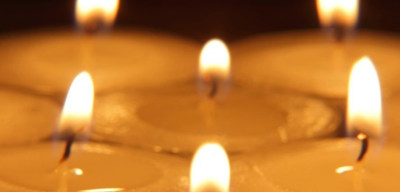10 Candle Safety Tips for a Safe Holiday from Erie Insurance
Erie Insurance has issued a press release highlighting candle safety tips during December, which is the peak month for candle-related fires, causing an average of 81 deaths and $278 million in property damage annually. The release provides ten practical safety tips for candle use, emphasizing the importance of supervision, proper placement, and maintenance. Key recommendations include keeping candles away from flammable items, trimming wicks, and considering flameless alternatives. Erie Insurance positions itself as a leading insurer, ranked 12th in homeowners and 13th in automobile insurance based on direct premiums written.
- Offers practical safety tips that could prevent accidents and claims, potentially lowering payouts for candle-related incidents.
- Reinforces brand reliability and positioning as a safety-conscious insurer, possibly enhancing customer trust.
- Highlighting candle fire risks could increase consumer anxiety about home safety, impacting insurance perception negatively.
- High annual figures for fire-related deaths and damages may suggest inadequate public awareness, reflecting poorly on the insurance industry's outreach efforts.
Insights
Analyzing...
ERIE, Pa., Dec. 17, 2021 /PRNewswire/ -- From pumpkin spice to winter pine, there are a plethora of candle scents to choose from—not to mention the endless styles. Whatever your go-to candle is, now is the season to burn it. But did you know December is the peak month for candle fires, with January being a fast follower? These fires cause an annual average of 81 deaths, 677 fire injuries, and
It might seem like a no-brainer, but be sure to follow these 10 safe candle practices from Erie Insurance.
- Stay close by. Never leave a candle unattended. If you notice your candle has a high, flickering flame, it's time to extinguish it.
- Watch kiddos and pets. Keep candles away from small children and pets. And don't leave a child asleep beside a candle. (And, of course, keep the lighters way out of reach.)
- Clear some space. Be sure to place candles on an uncluttered, sturdy surface—and make sure it's heat-resistant. Any candle in a holiday décor item (even a votive) should not be near anything else that could catch fire.
- Move flammable items. Keep candles at least one foot away from other materials or items while burning. Three out of five candle fires start when flammable items are too close to a burning candle.
- Always trim the wicks. Long or warped wicks are more likely to burn unevenly, drip or flare up. Purchase a wick trimmer and keep wicks trimmed to ¼" for optimal candle use. (Pro tip: Wick trimmers retail between
$10 -15, so they won't break the bank!) - Read the label. Pay attention to the manufacturer's recommendations for burn time and proper use. Every candle is different – some get too hot after a few hours. No sticker with instructions? Then seriously reconsider purchasing or using that candle. If it doesn't meet labeling standards, it probably doesn't meet other important fire safety standards.
- Dip that wick. Consider purchasing a wick dipper (only a few bucks), you'll prevent hot wax from splattering and also keep your wick protected, while eliminating the huge puff of black smoke you get when you just blow it out.
- Know when it's time to toss. Don't burn a candle to the very end of its life. Burning your candle all the way down is a fire hazard. Instead, pitch it when there's two inches of wax left in a freestanding candle or ½" in a container candle. A lot of higher-end candles burn out on their own, but don't count on it.
- Invest in quality. Avoid buying cheap candles – a lot of times they don't last and aren't even very fragrant after a few burns, anyway. Pay attention to the width of the candle and the number of wicks. For example, a three-wick candle that is too small in diameter can burn way too fast and create a bigger flame. A wide candle with only has two wicks, might not burn evenly, either. Bottom line: you get what you pay for.
- Go flameless! Consider alternatives to traditional candles: flameless candles, pod warmers or plug ins. Today's flameless models look incredibly real, and some even have scents. Another option is using a scent warmer which uses a pod of wax, rather than a hot flame. Some are electric and some plug into your outlet. Again, always follow the manufacturer's instructions on these items.
Candles can give your holiday or event that special spark it needs, but when opting for a real candle, make sure you and your family take the proper precautions. Talk to your ERIE agent to ensure you have adequate coverage for your home and everything in it.
About Erie Insurance
According to A.M. Best Company, Erie Insurance Group, based in Erie, Pennsylvania, is the 12th largest homeowners insurer, 13th largest automobile insurer and 13th largest commercial lines insurer in the United States based on direct premiums written. Founded in 1925, Erie Insurance is a Fortune 500 company and the 16th largest property/casualty insurer in the United States based on total lines net premium written. Rated A+ (Superior) by A.M. Best, ERIE has more than 6 million policies in force and operates in 12 states and the District of Columbia. News releases and more information are available on ERIE's website at www.erieinsurance.com.
![]() View original content to download multimedia:https://www.prnewswire.com/news-releases/10-candle-safety-tips-for-a-safe-holiday-from-erie-insurance-301447158.html
View original content to download multimedia:https://www.prnewswire.com/news-releases/10-candle-safety-tips-for-a-safe-holiday-from-erie-insurance-301447158.html
SOURCE Erie Insurance Group









